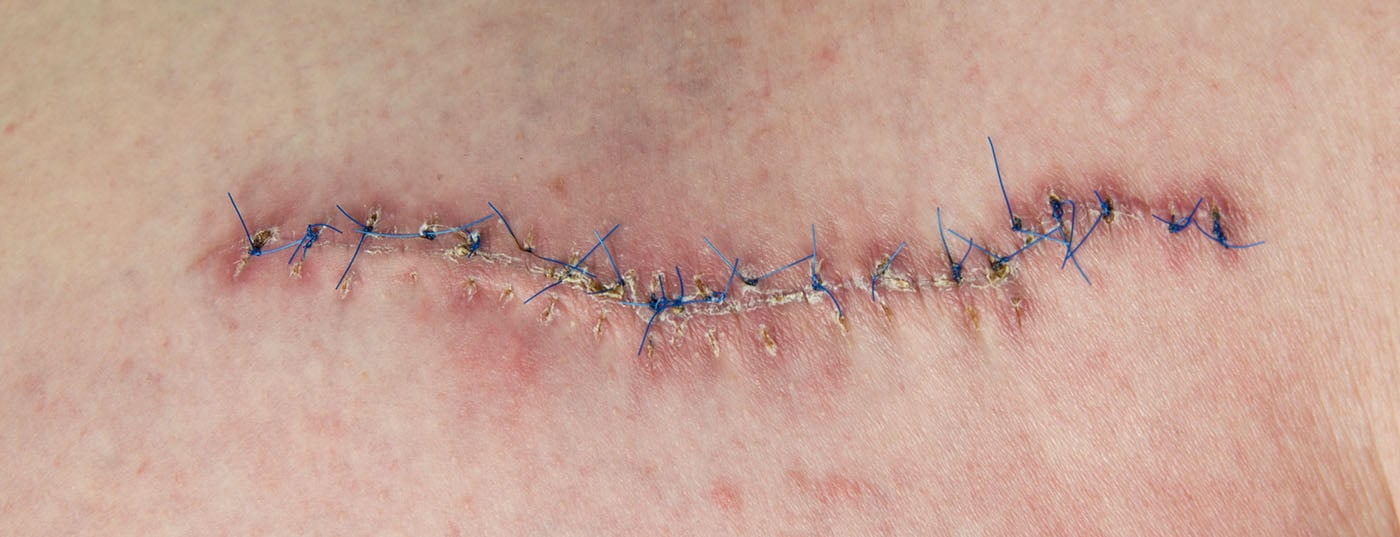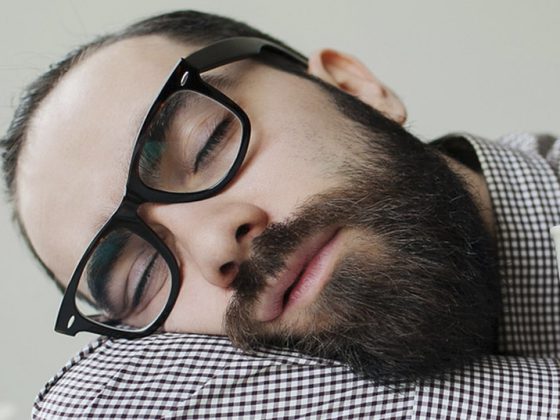Speakers from Germany, Denmark, Italy, Korea and Switzerland met again at the Hilton Airport Hotel at the beginning of the year to gather news and views from the field of laser medicine. The congress, organized by the Swiss Society for Medical Laser Applications (SGML), included lectures on scar therapy, but also left room for political digressions, such as the new legal regulation regarding non-ionizing radiation.
According to current international guidelines, successful scar management always begins with an accurate diagnosis of the scar type and the assessment of associated symptoms (itching, pain, tightness, etc.). After that, one should aim for symptom control and restoration of any limited functionality (if the scar is in the area of joints, for example). As a further step, which is very relevant for the quality of life, therapies for the best possible final aesthetic result follow. “In this area in particular, patients’ demands have grown significantly in recent years, which presents us with challenges,” said PD Dr. med. Gerd Gauglitz, Ludwig Maximilian University of Munich. The aim of aesthetic scar treatment is, among other things, to reduce the extent and volume of the disturbing scar.
Combinations more and more frequent
Overall, there is a trend toward combination therapies. Injectables used to treat scars include intralesional glucocorticoids such as triamcinolone acetonide, as well as chemotherapeutic agents such as 5-fluorouracil (5-FU) and bleomycin. Especially in keloids, 5-FU is increasingly coming into focus. According to international recommendations, for example, 5-FU in combination with intralesional glucocorticoids may be considered in cases of large high-risk keloids and lack of response to conservative therapy within eight to twelve weeks [1]. “The results of 5-FU and triamcinolone acetonide are quite good in our experience for refractory keloids. The scars flatten extremely quickly and – very important for the patient – symptoms such as itching, pain, burning, etc. recede in a short time. That’s why I like to use this combination initially,” says the lecturer. “Of course, these days, though, you want to get even better results, and that’s where vascular laser treatment comes in.”
A laser that is particularly well suited for combination therapies is the dye laser (effective in the wavelengths 585 and 595 nm). It leads to selective destruction of small vessels, tissue hypoxemia, and fibroblast death, resulting in decreased collagen production. In particular, the itching and erythema can be very well controlled with the dye laser. Shorter laser pulses are more effective than longer ones, although the results with the laser alone “don’t knock you right off your stool,” as the speaker put it. “That’s why I recommend flattening the keloids a little bit beforehand with cryotherapy, triamcinolone acetonide or combinations as I mentioned.” Alternatively, one can use the Nd:YAG laser, which has a similar mechanism of action as the dye laser but a greater depth of penetration. However, clear recommendations and established protocols with regard to setting etc. do not yet exist due to the limited number of studies.
Fractionated laser therapy
According to Dr. Gauglitz, fractional laser is becoming increasingly important in scar treatment. Whether non-ablative (e.g. 1540, 1550, 1565 nm) or ablative (Er:YAG 2940 nm or CO2 10 600 nm) is decided based on the indication and side effect profile. Fractional laser is an effective option especially for burn scars and atrophic scars, but it can also achieve good results in some cases for mature scars (e.g. incised scars) as well as hypertrophic and immature scars. “Treatment for keloids is very much related to the individual experience of the physician. You have to be careful not to stimulate the keloid to grow even more,” Dr. Gauglitz explained.
Indications
According to international recommendations [1,2] fractional laser is increasingly an alternative to dye laser for immature or erythematous hypertrophic scars, but also for linear hypertrophic scars. “One thing to be aware of, however: Prevention of unsightly scars remains more successful than treatment,” Dr. Gauglitz noted. Prophylaxis or treatment of immature scars should be performed within the first months after suture removal. Different protocols can be used: Dye laser, non-ablative or ablative fractionated laser (sometimes already one day after or even before excision). Ultimately, the goal is to normalize the wound healing process. “We hope to see more studies in the next few years that objectively show that this may also be an interesting approach for everyday life,” the expert said.
There are also positive data on fractional laser in the management of atrophic scars and burn scars: “Especially with atrophic scars, it is difficult to meet the patient’s expectations. Both ablative laser types (Er:YAG andCO2) show improvement. In a study of ours, however, the fractionalCO2 laser was again significantly superior to Er:YAG, mainly because of heat generation.”
Various studies have shown that the fractionalCO2 laser initially causes initial collagen shrinkage. After that, skin tightening, re-epithelialization and collagen remodeling set in. In the long term, the latter mechanism leads to an improvement in skin architecture and a collagen profile that is more in line with healthy skin. “However, the collagen remodeling process takes time. This should be clearly communicated to patients,” Dr. Gauglitz said. You can’t expect the effects too soon. Patients should nevertheless be visited at least twice during the first two weeks to check the wound – however, a longer period (e.g. three months) is useful to check the final result. “In the first four weeks, most are disappointed at first because the swelling is gone and it looks pretty much the same as before. That’s when you have to wait and see. In addition, one should be realistic and not schedule too few sessions,” says the speaker.
In hypertrophic and, more specifically, burn scars, the use of fractionalCO2 laser is particularly promising. “In an ongoing study of ours, it is becoming apparent that fractional CO2-laser, significant improvements in important objective measurement variables (e.g. Vancouver Scar Scale) and in quality of life (DLQI) can be achieved after just one treatment. And the improvements continue to increase without further treatment.” With multiple sessions, aesthetic results can be further improved.
State of affairs at NISSG
In 2012, the Federal Council commissioned the drafting of a federal law on protection against non-ionizing radiation (NIR, generated by laser pointers, medical lasers or solariums, among others). “Many NIR and sound aspects are already regulated,” explained Dr. Evelyn Stempfel-Mohler of the FOPH. “It was therefore a matter of supplementing existing laws.” In concrete terms, the new regulation stipulates that cantons will be able to monitor manufacturers’ compliance with safety requirements, for example in the case of solariums.
Products such as flash lamps for hair removal or ultrasound devices for cosmetic treatments can cause considerable stress to people, but pose little or no risk to health when operated competently. Here, the new law considers adequate training and expertise of the providers to be fundamental (e.g. with a certificate of expertise and the involvement of a suitable specialist). These procedures require professionals to weigh the medical benefits against the risk. However, for some years now, these products have been increasingly migrating into the cosmetics sector, making regulation necessary.
In addition, there should be clear regulations for events that use NIR and sound elements in combination, for example concerts with laser shows etc. Lastly, and this was the main reason for drafting the law, powerful laser pointers or amplifying attachments that significantly endanger health are to be banned.
Stages in the political process
Between April and July 2014, the drafted law went out for consultation. This revealed that the need for regulation in this area was unanimously considered important. However, the demarcation from other laws and the concrete enforcement were unclear. The cantons also wanted a ban on solariums for minors. Therefore, the whole thing was revised again and now referred to parliament in 2016, where a decision is not expected until 2018 at the earliest. In parallel, the implementing regulations will be worked out in more detail (with priority: laser pointer ban).
“Physicians will not be directly affected by the regulation regarding lasers and IPL. Only applications in the cosmetic field will be affected by the new law. However, we are in close contact with the medical and cosmetic societies to discuss the possibilities for training and proof of expertise, etc. Initial roundtable discussions are planned for later this year,” says Dr. Stempfel-Mohler. The goal is to integrate the expertise into vocational training. A ban should be avoided as far as possible and should only be used as a last resort.
Source: Laser Congress SGML 16, January 14, 2016, Zurich
Literature:
- Gold MH, et al: Updated international clinical recommendations on scar management: part 1 – evaluating the evidence. Dermatol Surg 2014 Aug; 40(8): 817-824.
- Gold MH, et al: Updated international clinical recommendations on scar management: part 2 – algorithms for scar prevention and treatment. Dermatol Surg 2014 Aug; 40(8): 825-831.
DERMATOLOGIE PRAXIS 2015; 26(1): 31-32











